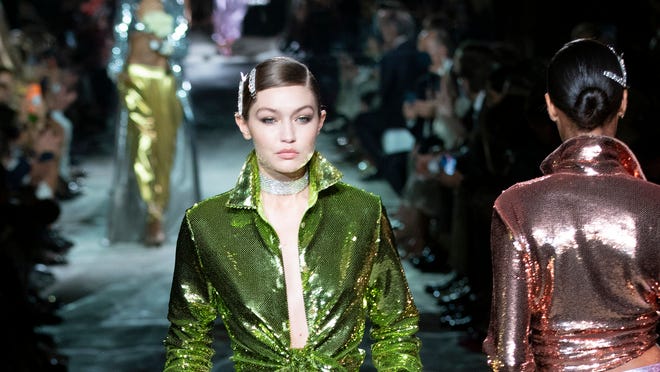Luxury fashion house Balenciaga is receiving backlash over a pair of sweatpants that social media users and experts say appropriates from Black culture.
The Trompe-L’Oeil pants, available online for $1,190, feature what looks like red and green boxers peeking out from the top of gray sweatpants, a style popularized by hip-hop artists. A video of the pants on display shared on TikTok this month has racked up more than 1.6 million views
“This feels racist,” someone can be heard saying in the clip.
The origins of the style of sagging pants, or wearing pants below the waist and exposing your underwear, are unclear, said Susan Scafidi, author of “Who Owns Culture: Appropriation and Authenticity in American Law.”
Some have suggested the style originated in prisons because inmates didn’t have access to belts or out of necessity in Black and brown communities where young people wore hand-me-downs to save money, Scafidi said.
But the style became a symbol of hip-hop culture, particularly in the 1990s, and streetwear like other kinds of oversized clothing, she said. In the mid-2000s, several cities passed laws banning saggy pants which were disproportionately enforced against young, Black men.
On Feb. 5, 2019, Officer Traveion Brooks tried to stop 31-year-old Anthony Childs in Shreveport, Louisiana, for violating the city’s sagging pants ordinance. During the chase, Brooks fired eight shots, three of which hit Childs. The coroner classified the death as a suicide from a self-inflicted gunshot wound to the chest, a finding citizens have questioned.
“There is a history there. We have a style that when it is worn by the people that originated it becomes criminalized and punishable,” Scafidi told USA TODAY on Monday. “We now have a style that is being celebrated that was very recently forbidden.”
Scafidi said borrowing from other cultures becomes problematic when a style or trend is divorced from its history and, in this case, it’s likely the designer was completely unaware of the look’s significance.
“No one along the way realized that this was problematic,” she said. “They may not have looked at this particular style through the right lens or, here’s the key, had someone on the design team who wears those lenses naturally.”
Justin Bieber’s dreadlocks spark debate:What’s cultural appropriation versus appreciation?
Blackface shoes and Holocaust T-shirts:Fashion brands’ most controversial designs
Balenciaga’s parent company, Kering, did not immediately respond to a request for comment from USA TODAY, but spokesperson Ludivine Pont told CNN via email that the pants incorporated a commonly-used design strategy.
“In many of our collections, we combine different wardrobe pieces into a single garment, such as denim jeans layered over tracksuit pants, cargo shorts merged with jeans and button-up shirts layered over t-shirts,” she said. “These Trompe L’Oeil trousers were an extension of that vision.”
In addition to emotional harm of cultural appropriation, attaching a high price tag to a style taken from a historically disadvantaged community that hasn’t been able to reap the benefits of that style also creates economic harm, Scafidi said.

Multiple high fashion retailers and celebrities have faced backlash over cultural appropriation in recent years.
The hairstylist behind Japanese fashion label Comme Des Garçons apologized after a Paris Fashion Week show featuring white models wearing cornrow wigs. Gucci came under fire for selling a $790 “Indy Full Turban” that many social media users said appropriated the Sikh headdress. Vogue also apologized after sharing an image of model Kendall Jenner to Instagram on Friday donning what appeared to be an afro.
More:From Gucci to Prada, luxury fashion brands challenged to confront racist attitudes
More:H&M apologizes for ad showing black child model wearing ‘monkey’ hoodie
In addition to claims of cultural appropriation, several fashion houses have faced criticism for racist designs.
Prada pulled its Otto animal charm from stores after customers claimed its design resembled Blackface. Burberry apologized for sending a model down the runway at London Fashion Week wearing a hoodie with a noose around the neck. Gucci faced uproar again over an $890 sweater that resembled blackface.
Having a more diverse design team and strengthening cultural sensitivity systems already in place can help prevent such mistakes in the future, Scafidi said.
But she warned that repeatedly having members of minority communities outline why cultural appropriation is problematic can lead to “explanation fatigue.” She hopes the Balenciaga misstep will help solidify sagging pants in the fashion cannon as a historically Black style.
“People do need to take responsibility for educating themselves,” she said. “The next company to do this will have no excuse.”
